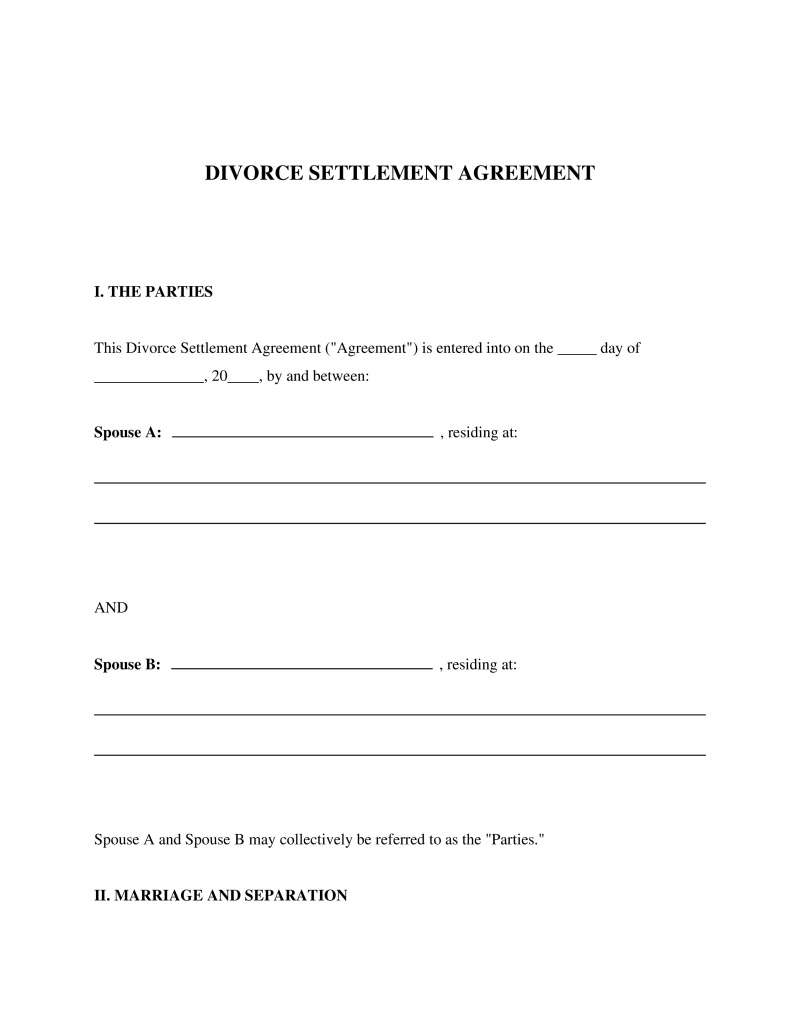A Divorce Settlement Agreement is a legal document that outlines mutually agreed terms for asset division, child custody, and support, helping divorcing spouses formalize their arrangements and ensure compliance across all U.S. states.
Has Minor Children
Select 'Yes' if you and your spouse have any children under the age of 18 together.

Table of Contents
What is a Divorce Settlement Agreement?
A Divorce Settlement Agreement, also known as a separation agreement or marital separation document, is a legally binding contract that outlines the terms of a divorce between two parties. It covers a wide range of provisions including division of assets and debts, alimony, child support, and custody arrangements. This document is essential for individuals seeking to formalize the terms of their separation and avoid potential disputes in the future. By clearly delineating rights and responsibilities, it provides a structured path forward for both parties, ensuring a fair and equitable resolution to their separation.
Key Features
Important Provisions
- Division of Property: Details on how both assets and liabilities will be distributed among parties.
- Child Custody and Support: Outlines who will have custody of children, visitation rights, and financial support arrangements.
- Spousal Support: Specifies if one party will provide financial support to the other, including amounts and duration.
- Debt Responsibility: Clarifies who is responsible for existing debts after the separation.
- Modification Clause: Allows for future modifications to the agreement under certain conditions.
Pros and Cons
Pros
- +Simplifies the divorce process by providing a clear agreement that can be presented in court.
- +Reduces legal expenses by minimizing the need for extensive litigation over assets and custody.
- +Allows for personalized arrangements that reflect the unique needs of both parties and their children.
- +Speeds up the legal process by presenting a mutually agreed-upon settlement to the court.
- +Helps prevent future conflicts by clearly laying out terms and expectations for post-divorce life.
Cons
- -May require negotiations and compromises that not all parties are willing to make.
- -Legal complexities can still arise, necessitating professional legal advice to ensure fairness and compliance with local laws.
- -Does not cover any issues that arise post-signing unless specifically stipulated within.
Common Uses
- Formalizing an agreement on property division without court intervention.
- Establishing detailed parenting plans that include custody arrangements and child support obligations.
- Agreeing on spousal support terms directly between divorcing spouses.
- Documenting how debts will be handled post-divorce to prevent future disputes.
- Setting out agreements on how retirement accounts will be divided or managed.
- Determining tax considerations and responsibilities post-divorce.
Frequently Asked Questions
Do you have a question about a Divorce Settlement Agreement?
Example questions:
Not the form you're looking for?
Try our legal document generator to create a custom document
Community Discussion
Share your experience and help others
Legal Notice: Comments are personal opinions and do not constitute legal advice. Always consult a qualified attorney for matters specific to your situation.
Comments (0)
Leave a Comment
No comments yet. Be the first to comment!